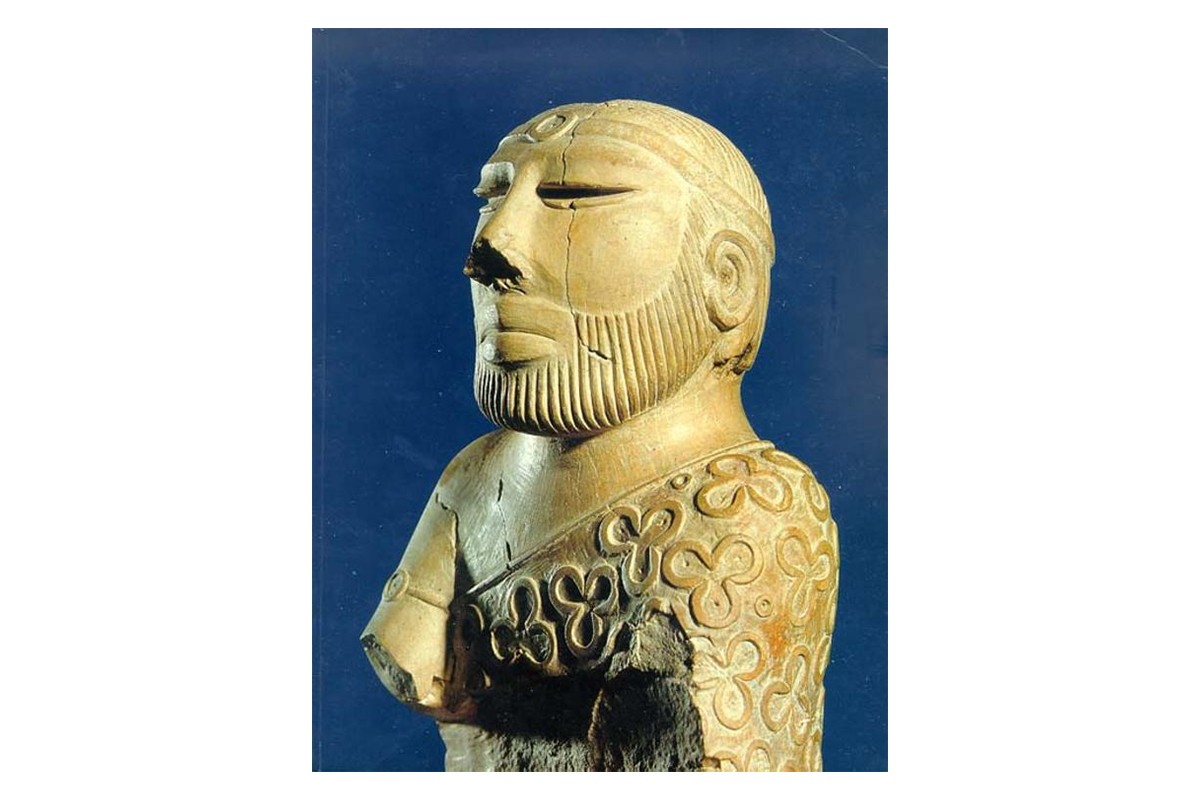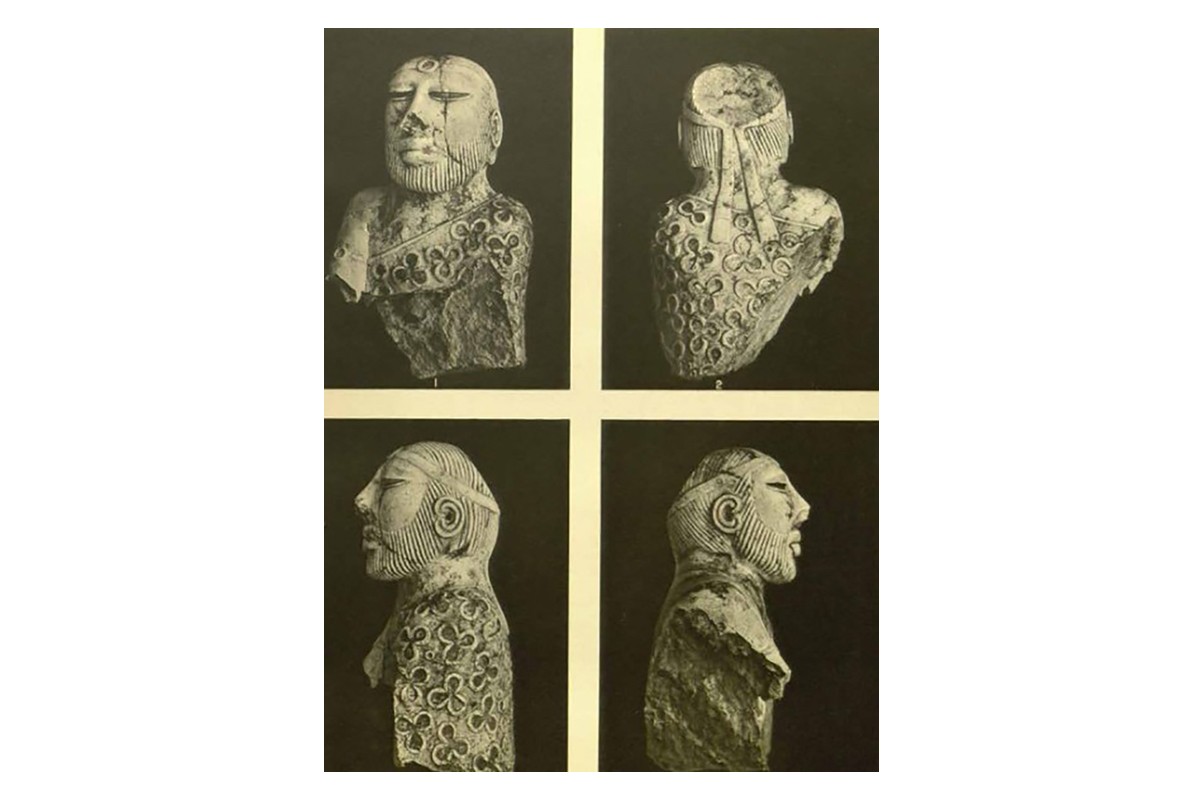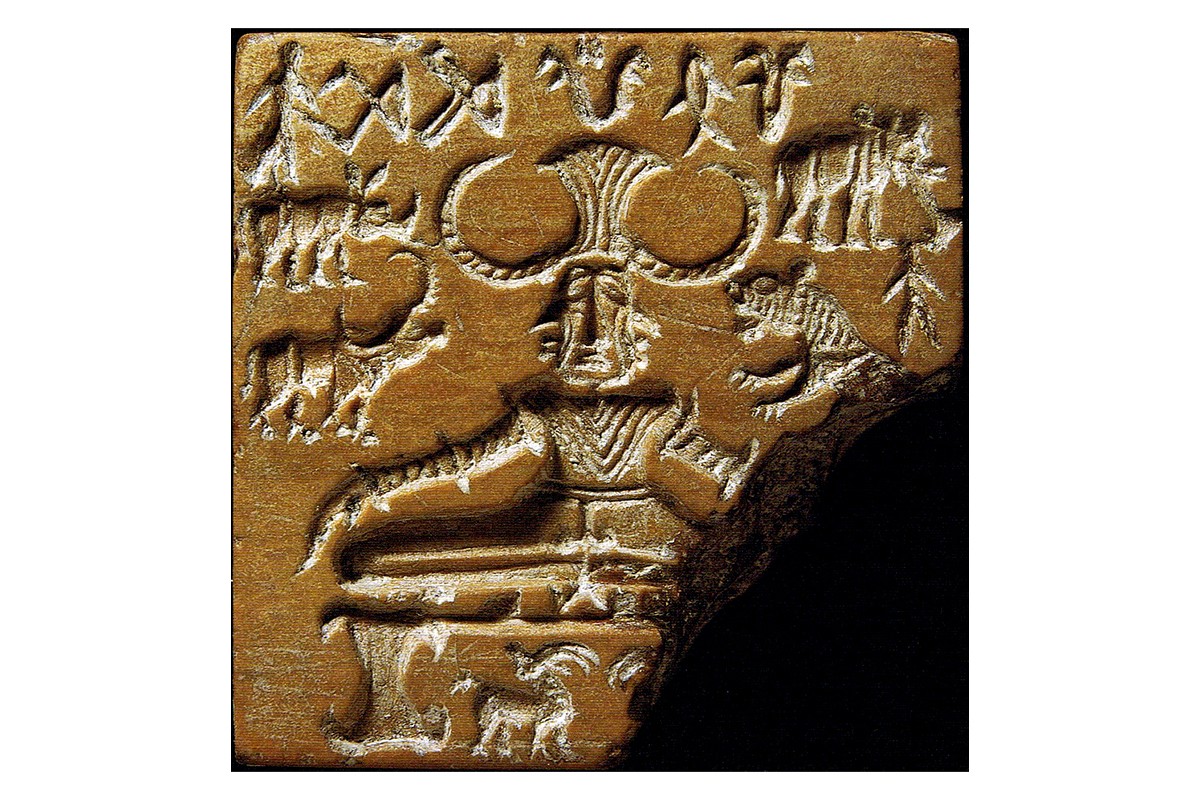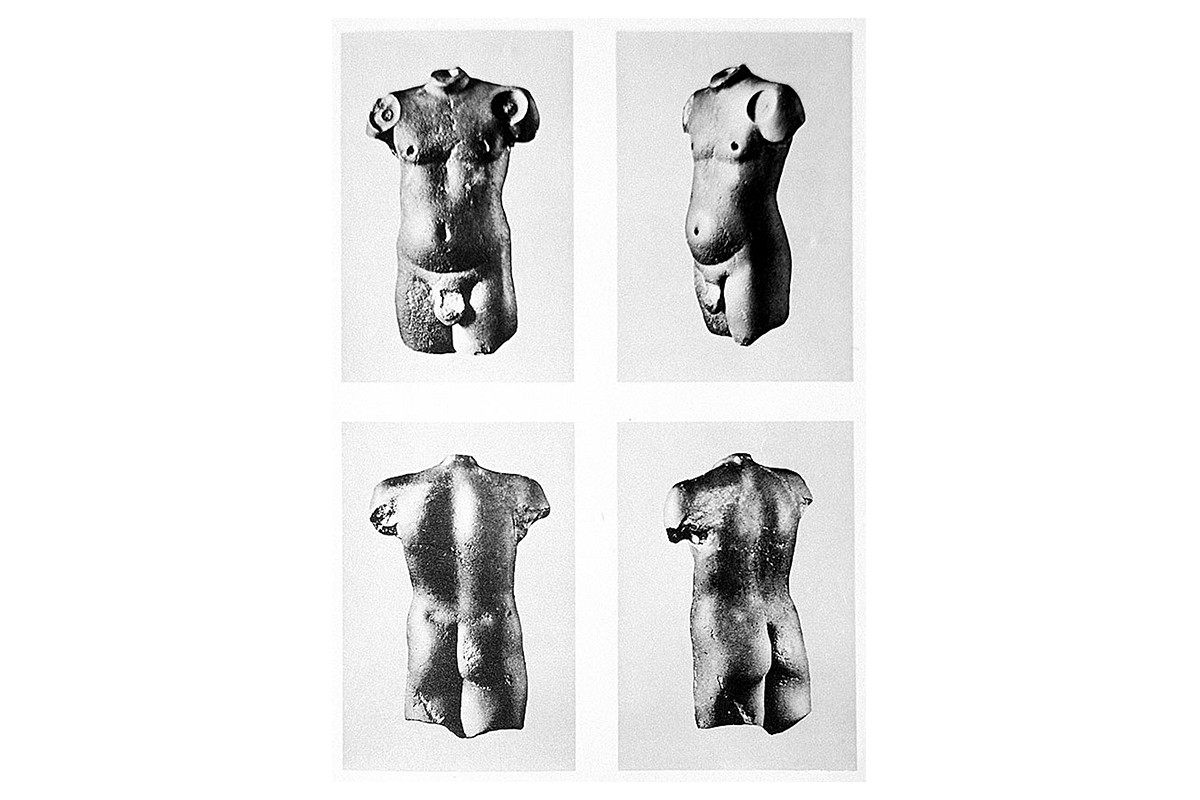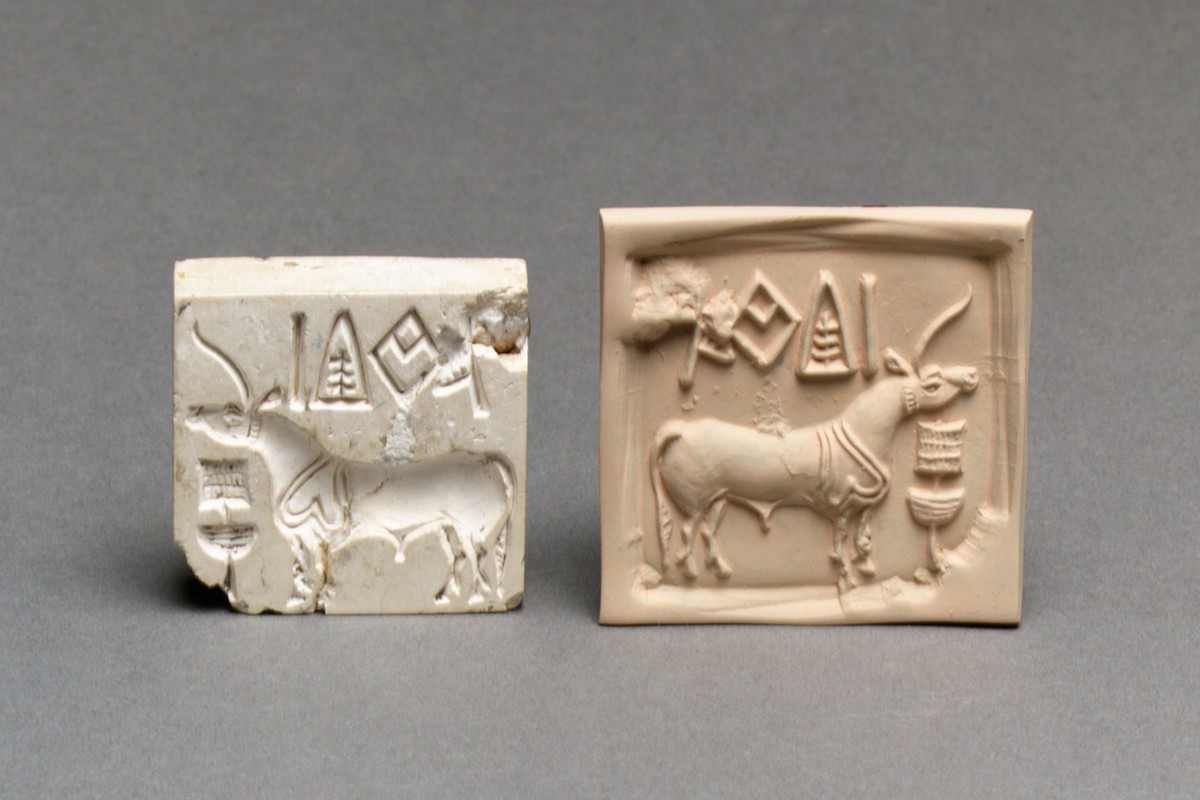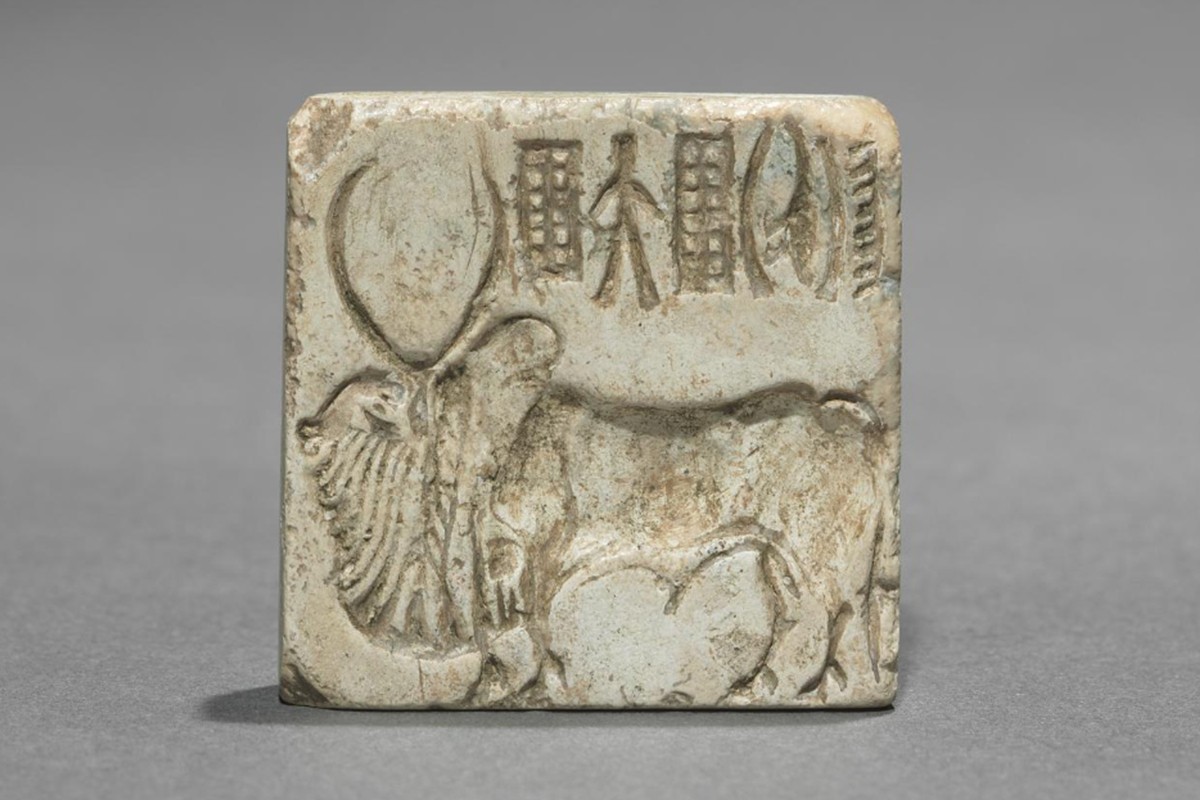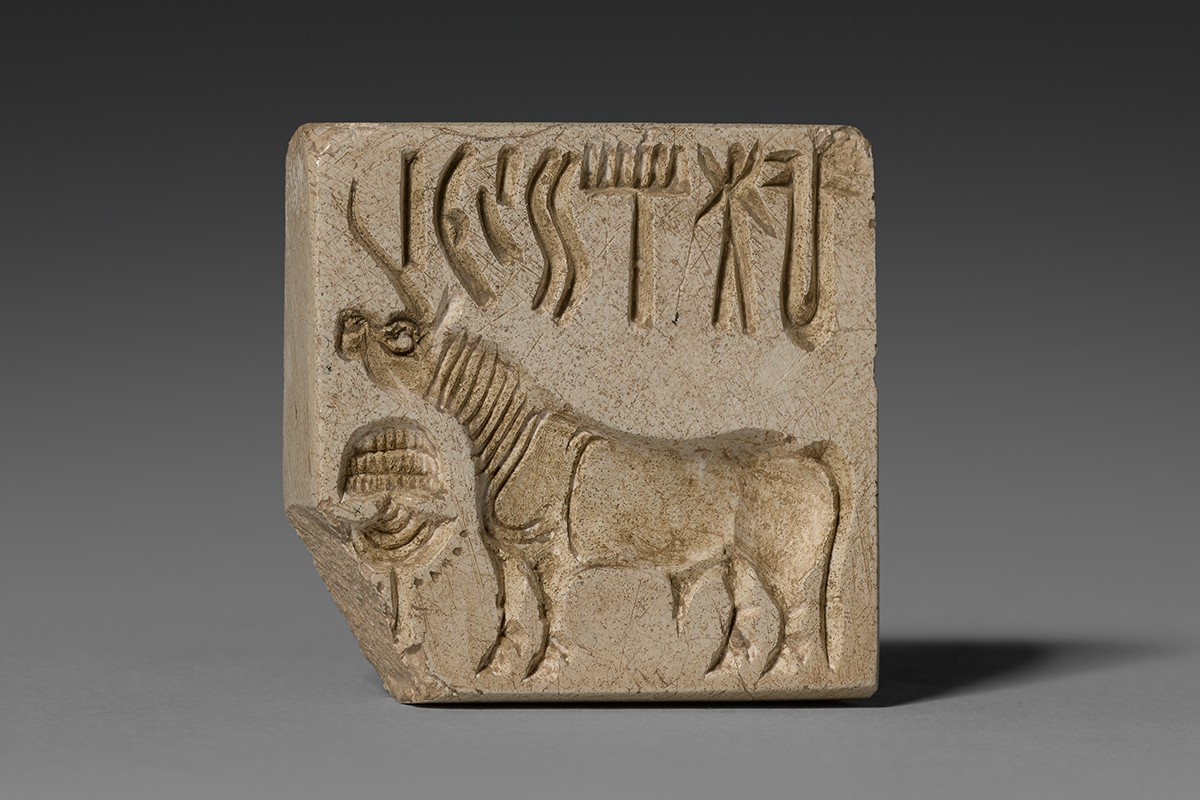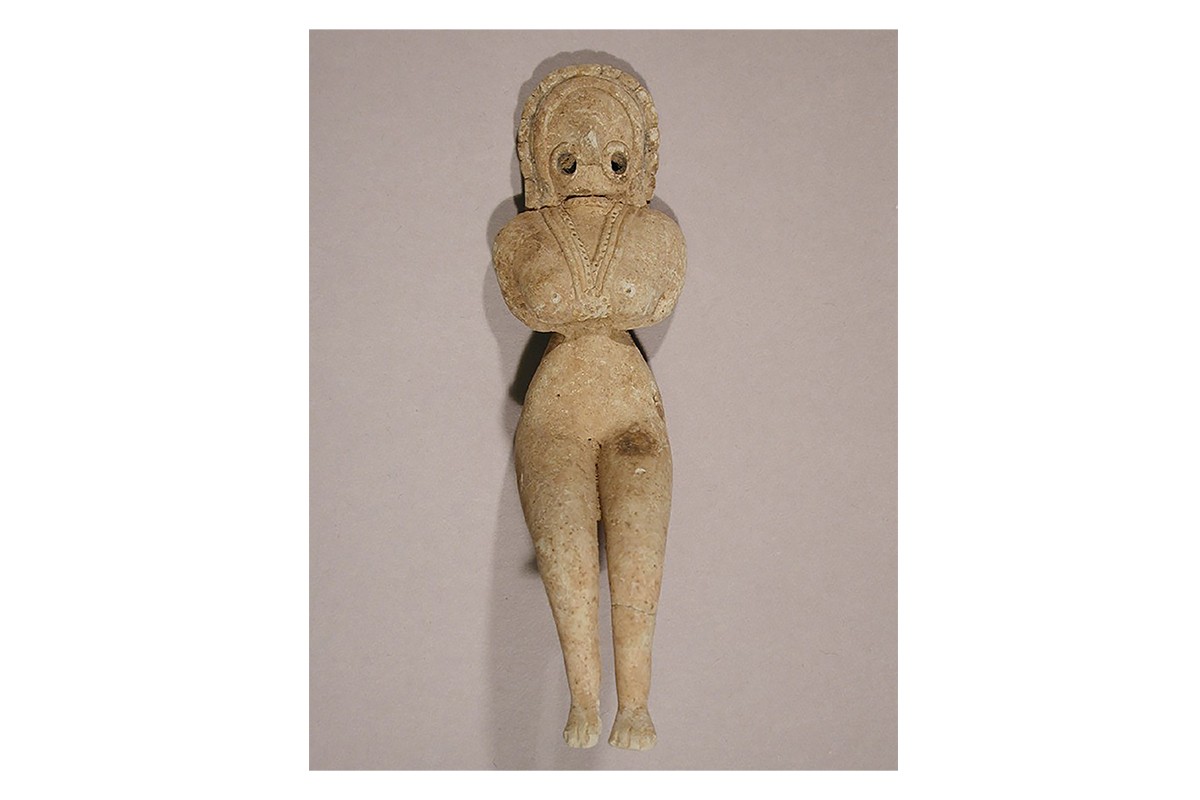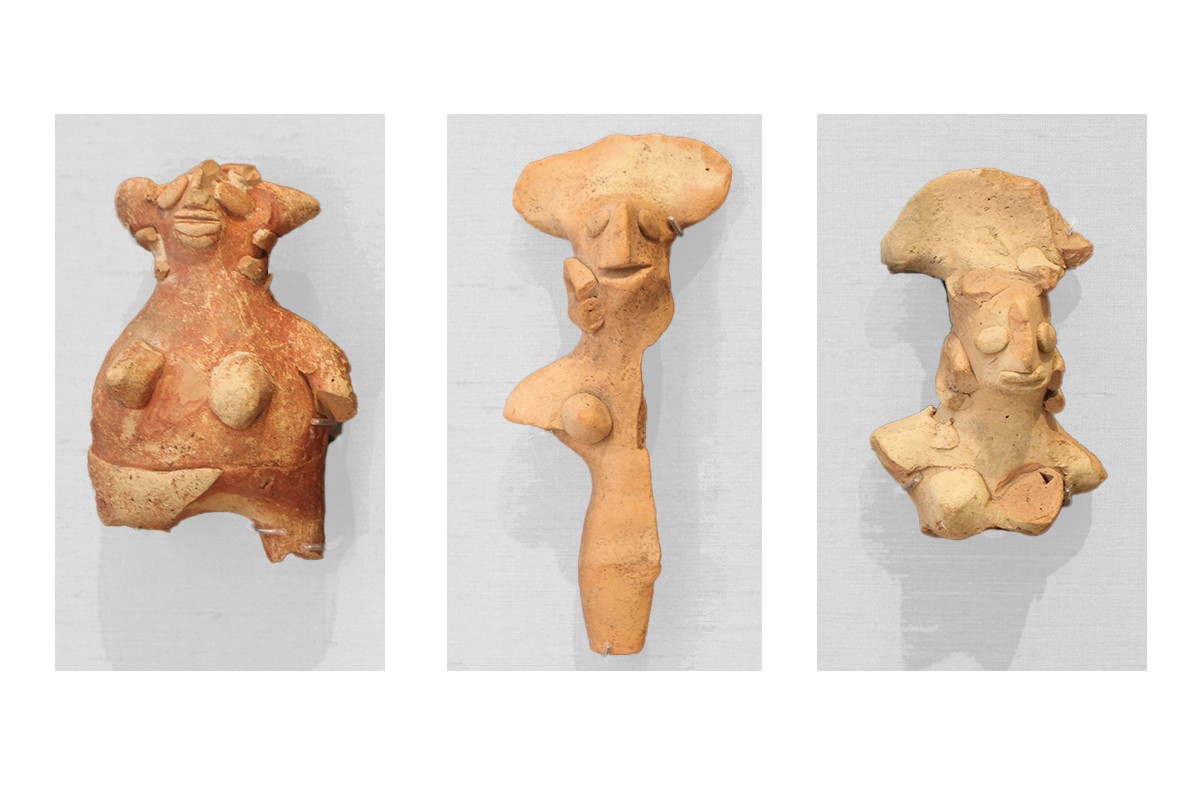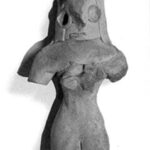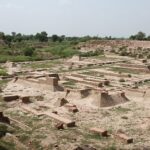The Indus Valley Civilisation Enters Its Mature Harappan Phase
2500–1900 BCE
The Indus Valley Civilisation expands in terms of global trade routes and dense economic activity, employs a standard system of weights and measures, and has complex works of urban planning and civil engineering. By this time, the cities of the Indus Valley are home to as much as forty percent of the global population. Both maritime and overland trade is conducted with cultures in the Arabian Peninsula, Mesopotamia, and possibly Anatolia and the Levant. Large volumes of steatite seals, with impressions of a two-horned bull, a unicorn-like creature, an elephant, and other animals are produced, though their purpose is unclear. Human figurines, terracotta artefacts, ornaments, bronze utensils, and innovative decorated pottery using imported materials such as faience are produced. These include some of the most important examples of Harappan art, dated to between the third millennium BCE and the late-second millennium BCE — the steatite Priest King, the bronze Dancing Girl statue and the Red Jasper Male Torso.
Bibliography
Dani, A. H., and B. K. Thapar. “The Indus Civilization.” in Delors, Jacques. Learning: The Treasure Within; Report of the UNESCO of the International Commission on Education for the Twenty-first Century, Paris: UNESCO Publishing, 1996. https://en.unesco.org/silkroad/sites/default/files/knowledge-bank-article/vol_I%20silk%20road_the%20indus%20civilization%20BIS.pdf.
Huntington, Susan L., and John C. Huntington. The Art of Ancient India: Buddhist, Hindu, Jain. New York: Weather Hill, 1985.
Mackay, Ernest. The Indus Civilization. London: Lovat Dickson & Thompson Ltd., 1935.
Parpola, Asko. Deciphering the Indus Script. Cambridge: Cambridge University Press, 1994.
Possehl, Gregory L. The Indus Civilization: A Contemporary Perspective. Lanham, Plymouth: AltaMira Press, 2002.
Dani, A.H. and B.K. Thapar. “The Indus Civilization.” Learning: The Treasure within; Report of the UNESCO of the International Commission on Education for the Twenty-first Century , 1996. https://en.unesco.org/silkroad/sites/default/files/knowledge-bank-article/vol_I%20silk%20road_the%20indus%20civilization%20BIS.pdf .
Huntington, Susan L, and John C. Huntington. The Art of Ancient India: Buddhist, Hindu, Jain . New York, Tokyo: Weather Hill, 1985.
Mackay, Ernest. The Indus Civilization . London: Lovat Dickson & Thompson Ltd., 1935.
Parpola, Asko. Deciphering the Indus Script . Cambridge: Cambridge University Press, 1994.
Possehl, Gregory, L. The Indus Civilization: A Contemporary Perspective . Lanham, Plymouth: AltaMira Press, Rowman & Littlefield Publishers, 2002.
Feedback 
This entry appears in
Art in South Asia
Visit Timeline
Associated Timeline Events
First Published: March 11, 2024
Last Updated: July 12, 2024



